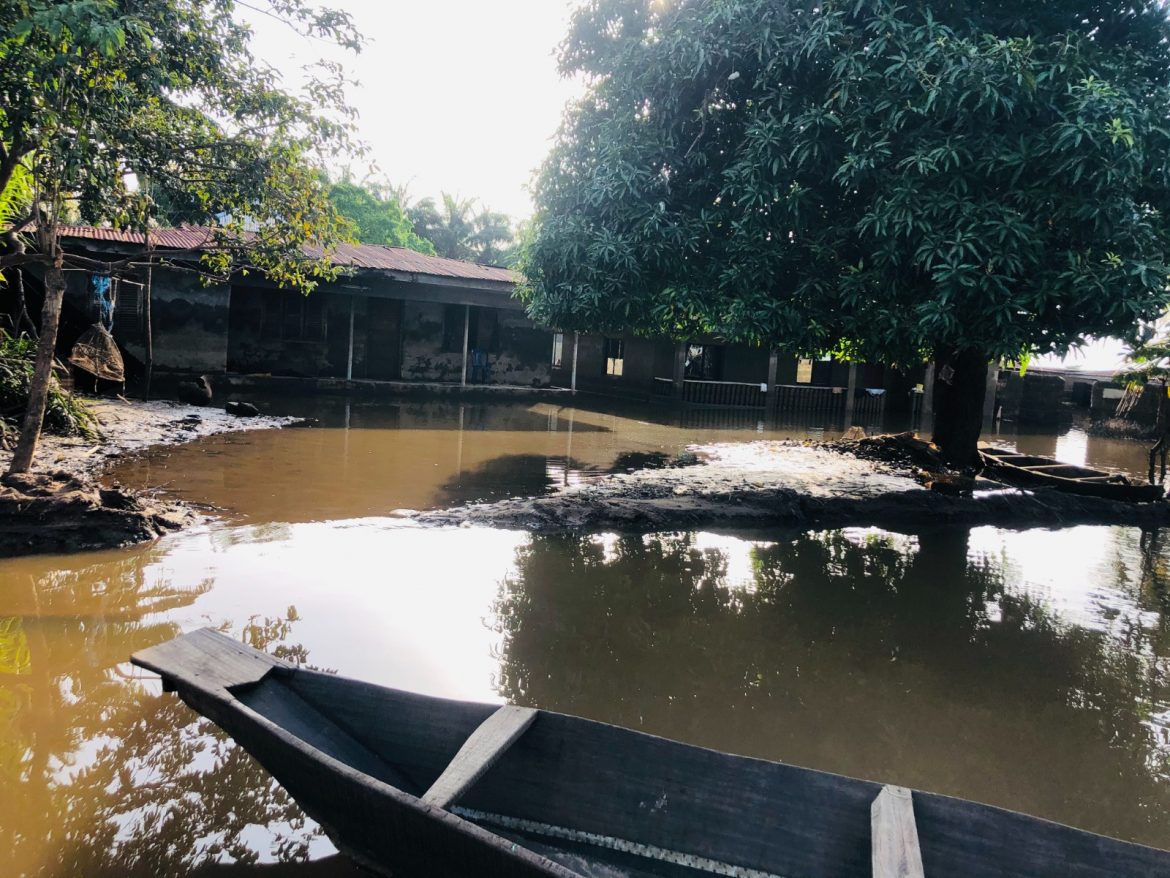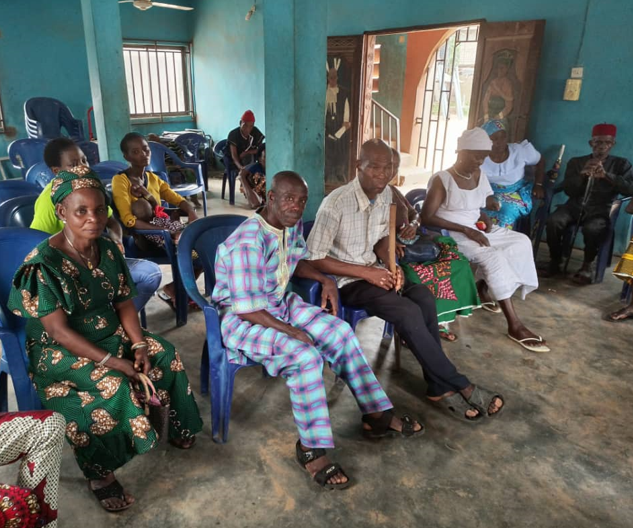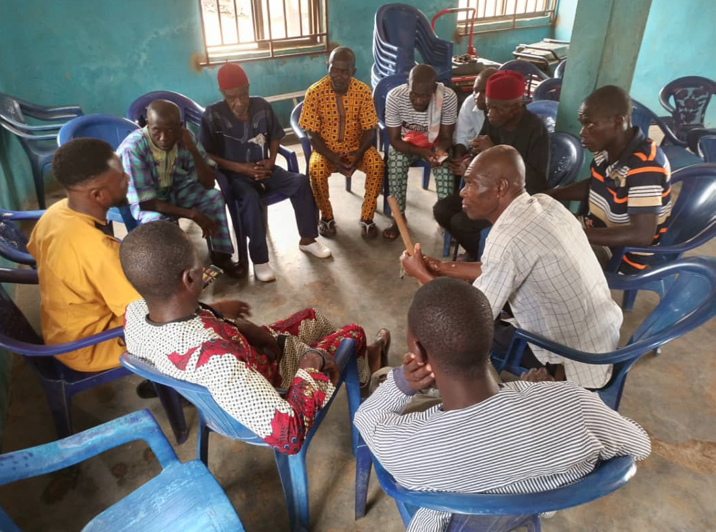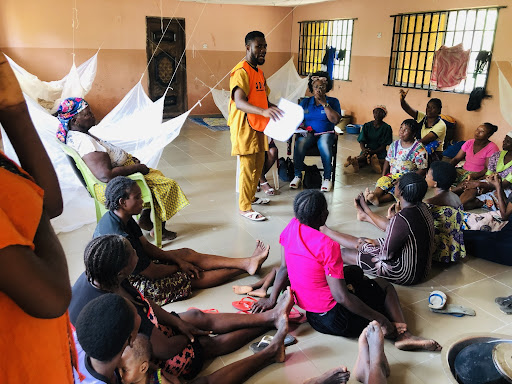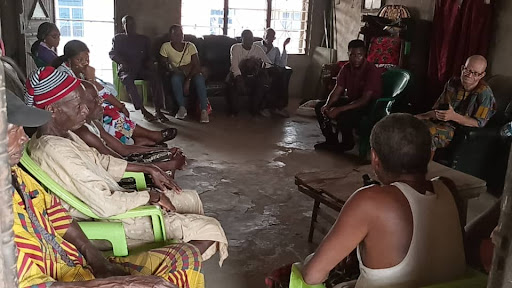In the final of this three-part series, Arinze Chijioke looks at the devastating impact of the 2022 flooding on households across communities in Anambra State and how the state government is failing to prioritise flood management in the state.
Benjamin Nweke clearly remembers the 2022 flooding in his Ossomala community in Ogbaru, one of the local governments in Anambra State. It is a traumatic experience he prefers not to relive.
It all began one night in September.
He and his family were asleep when he noticed water entering his house. Gradually, he started moving some of his property to an upstairs apartment owned by his landlord, hoping that the water would dry up.
But as days passed, the water level kept increasing and he moved his wife and three children upstairs. He could not carry everything, and soon, the entire house was submerged. Some foodstuffs and other household items were swept away by the flood.
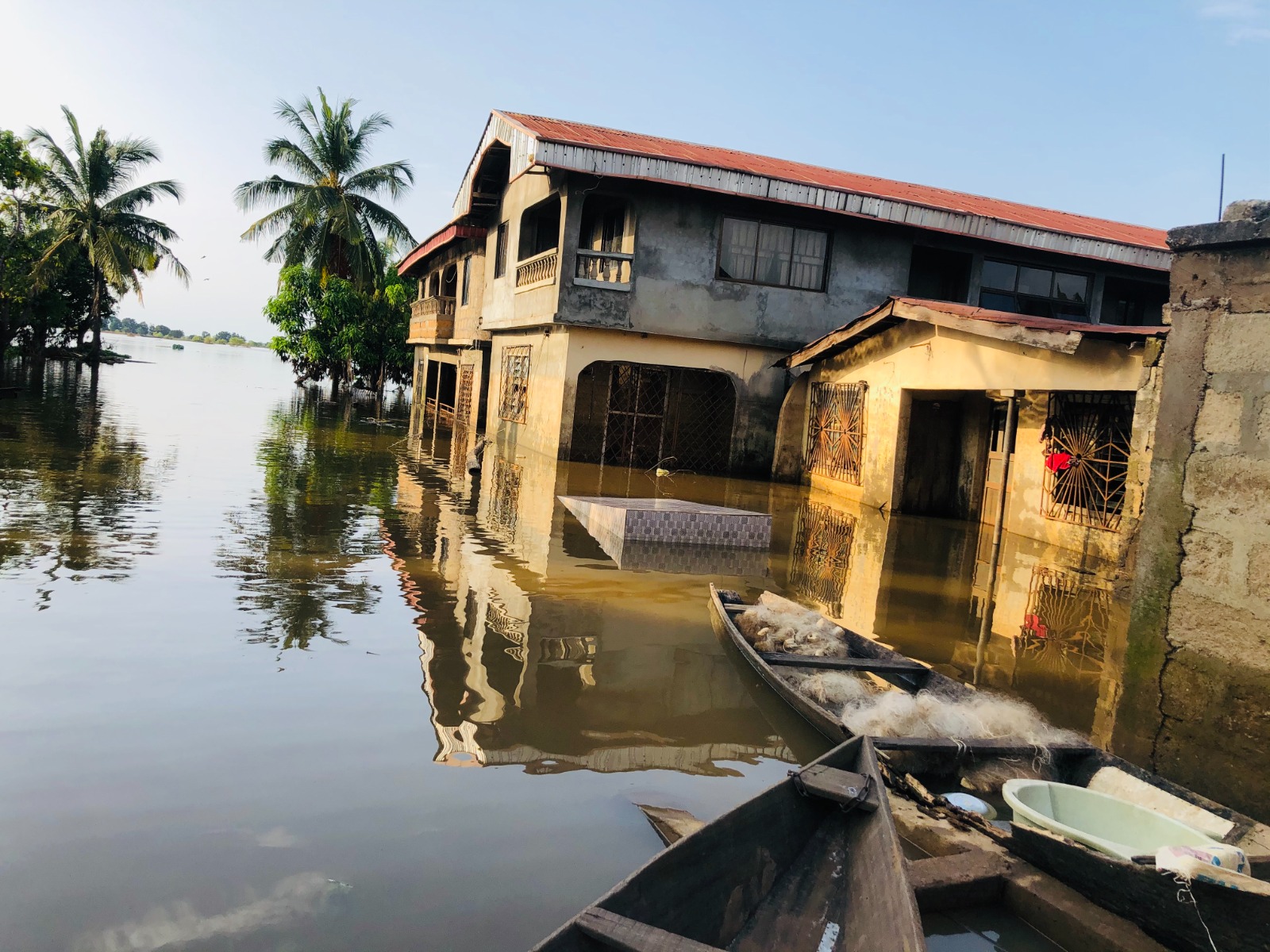
Umundeze Anam Community of Anambra west
“Me and my family stayed in our landlord’s apartment for two months” he recalled. Within that period, it was difficult for us to feed, we had to depend on help from friends and family members to survive. “Our local market had been destroyed by the flood too,”.
Apart from submerging his apartment, the flood also destroyed his four hectares of farmland where he had planted over 1,200 Yam Tubers, Maize and Cassava, hoping to harvest bountifully. Every night, he woke up, thinking of how to rebuild his life.
His family is only one out of several households in Ogbaru who could not harvest their crops following last year’s flooding that destroyed lives, houses and farmlands.
The body of 70-year-old Sunday Mesiobi, was found dead after his house apartment was submerged by the flood in 2022. Mesiobi, who is said to be the uncle of Arinzechukwu Awogu, the immediate past Chairman of Ogbaru Council Area was a native of Ogbe-Akpoma, Atani community.
A vulnerable people
Flooding in Anambra State is usually caused by overflow of water from major rivers and worsened by climate change with increased and irregular rainfall. While the River Niger affects Ogbaru-which lies along the coastal area, Onitsha South and Onitsha North LGAs, Omambala River affects Anambra West and Anambra East LGAs.
Data from the National Emergency Management Agency (NEMA) showed that Anambra state had the highest number of affected people with 729,046 out of which 526,215 were displaced, with Ogbaru LGA having the largest number of displaced people (204,339) people in the state. In all, more than 2.8 million people in 36 states in Nigeria were affected by the floods.
The proximity of these areas to the River Niger makes them susceptible to flood especially when the rivers overflow their banks, and there have been several incidents of flooding in the areas over the years – with its accompanying devastation of farmlands, buildings, roads, bridges, schools, hospitals, and churches.
Due to a combination of the flooding and erosion menace, bridges on the Onitsha-Atani Road, Ossomala-Ogwuikpele-Ase Azaga-Ndoni road, especially the Ossomala bridge at Umunnakwo community, have collapsed, forcing residents to depend on boats for inter-community travels.
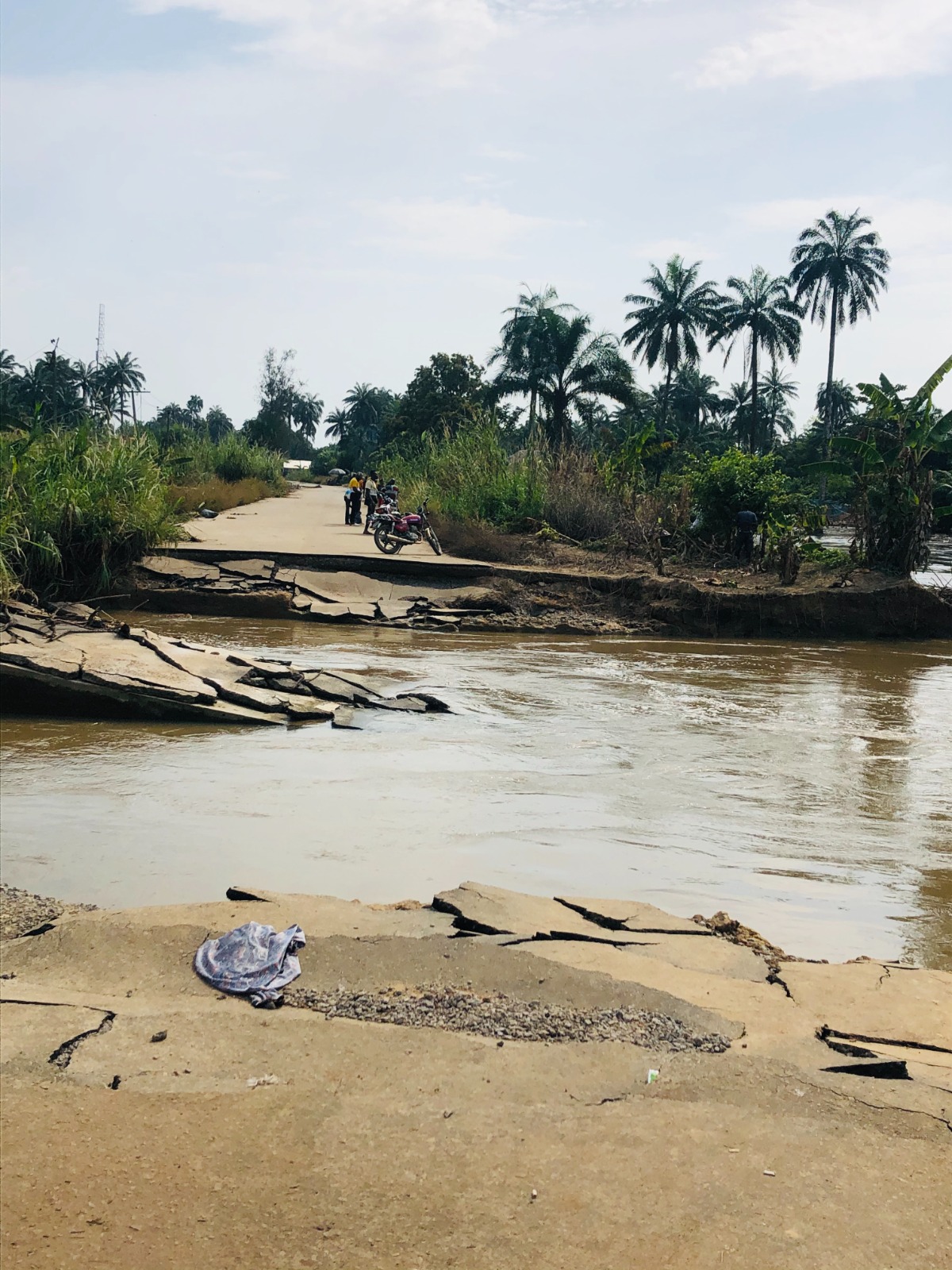
Umunankwo-Ossamala-Obeagwe-Ogwuikpele Road in Ogbaru local government
Further findings by this reporter showed that the central road connecting Ogbaru, a major food-producing area that hosts the eight viable oil wells in Anambra State, to Onitsha – Atani – Ossomala – Ogwuikpele – Ase Azaga – Ndoni road is in total collapse, making it extremely difficult to move our cash crops from the farms to the hinterland.
With over 600 people said to have lost their lives, 1.3 million people displaced, more than 200,000 houses either partially or fully damaged and more than 440,000 hectares of farmland partially or totally damaged, leading to a catastrophic loss of food access and livelihoods, the 2022 flooding was the worse flooding Nigeria has seen in more than a decade.
Failed promises, no commitment
After the flood wreaked havoc across communities in Anambra state, the state Charles Soludo promised to help flood-affected communities by providing them with relief materials. During his visit to Ogbaru, Onitsha North, Umuoba-Anam and Umueri, the governor was quoted as saying that he would also evacuate households and provide health services for the people.
Sadly, till now, many residents say they did not receive any help from the government as promised. Nwekeagu Shadrach, Project officer of the Justice, Development and Peace Commission (JDPC) Onitsha, which helped to provide succour to flood victims said that there was no swift response from the State Emergency Management Agency (SEMA), during the flooding.
“They always say they were waiting for the state government to give approval and only responded after the International Organization for Migration (IMO) came into the state to distribute food items to victims., “he said. “Their response was limited to those who were in IDP camps where they shared Beans, Rice and Garri.
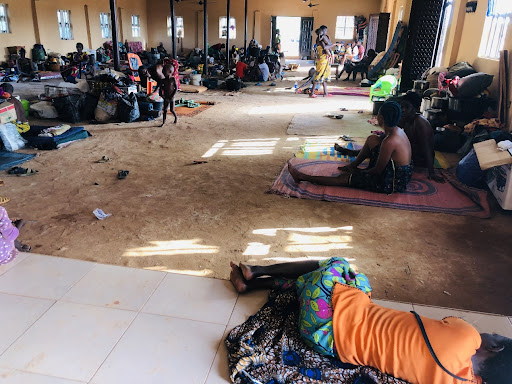
IDPs sleep on mats at Umueri Unity Hall, Anambra East
He explained that In Anambra West and Ogbaru where a large population of the people remained in their communities, there was no help from the government. No medical intervention and no food.
Out of N1.3 billion (1,319,500,000.00) budgeted for Erosion and flood Control in 2022, N97 Million (97,018,967.74) was released In the first quarter, a paltry N22,000 in the second quarter. By the third quarter, the original budget was revised to N595 million (595,500,000.00) and another paltry N59,000 was released, taking the total to 97,099,967.74, which is 16.3%.
Out of over N1 billion (1,182,280,454.00) budgeted for Erosion and flood Control in 2023, only N157 million (157,222,192.96) has been released In the first and second quarter, with the payment only coming in the second quarter, that is 13.3% of the total budget. Available reports also show that between 2021 and 2022, the state government received N1.971 billion as its share of the ecological fund. Yet, there are concerns over its utilization in the state.
This August, the member representing Ogbaru Federal Constituency in the House of Representatives, Anambra state, Hon. Afam Victor Ogene, blamed the devastating flood and its impact in Ogbaru on the government’s dismal preparedness in addressing the root causes.

Displaced persons from Anambra West
Ogene, who is the Chairman, of the House Committee on Renewable Energy, said that despite seasonal climate predictions and annual flood outlook released by NiMet and NIHSA, both the federal and subnational governments are not showing any commitment to dealing with the challenge.
Last year, $700 million was given to the Nigerian government by the World Bank to help at least 3.4 million people adapt to the changing climate; develop 20 watershed management plans; and prioritise investments that can slow desertification, among others.
However, questions have been raised regarding how exactly the money has been utilized as flooding remains a major challenge, especially across rural communities in the country.
250,000 poultry birds destroyed
Patrick Ugboma owns the automated Matucci Farms located at Agbobo Umuoga Ossomala where he rears birds. As the flood raged, they ravaged his farm, killing about 250,000 poultry birds. The situation forced him to shut down the farm, with about 400 workers losing their jobs.
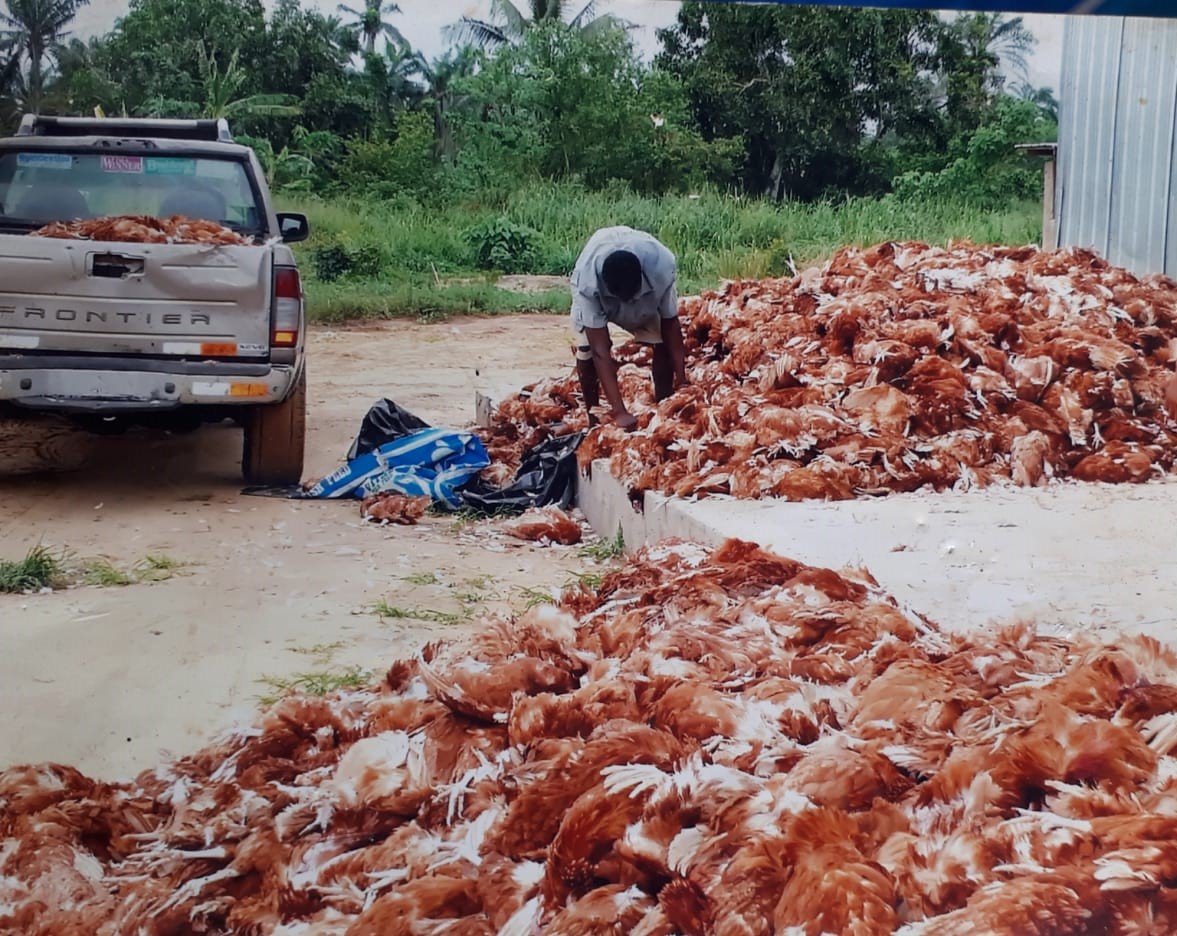
Dead chickens
This August, Ugboma sent a Save Our Soul (SOS) message on behalf of communities in Ogbru, calling on the federal government to expedite action towards tackling the perennial flooding in the area.
In the message, he said that agriculture, which was the mainstay of the people’s economic life has suffered unduly by the neglect of the community by successive state and Federal governments.
“These perennial floods have badly affected farming activities and further impoverished the people, “he said. “Most of the communities have become inaccessible due to the decrepit state of the only road leading into all the communities,”.
Deaths and more deaths
In October 2022, more than 70 people died after a boat carrying at least 80 people, capsized in the Ogbaru. According to Chukudifu Mercy, a woman leader in Ossomala, one of the communities in the area, most of the victims were women and children, trying to reach safety after communities had been inundated by floodwater.
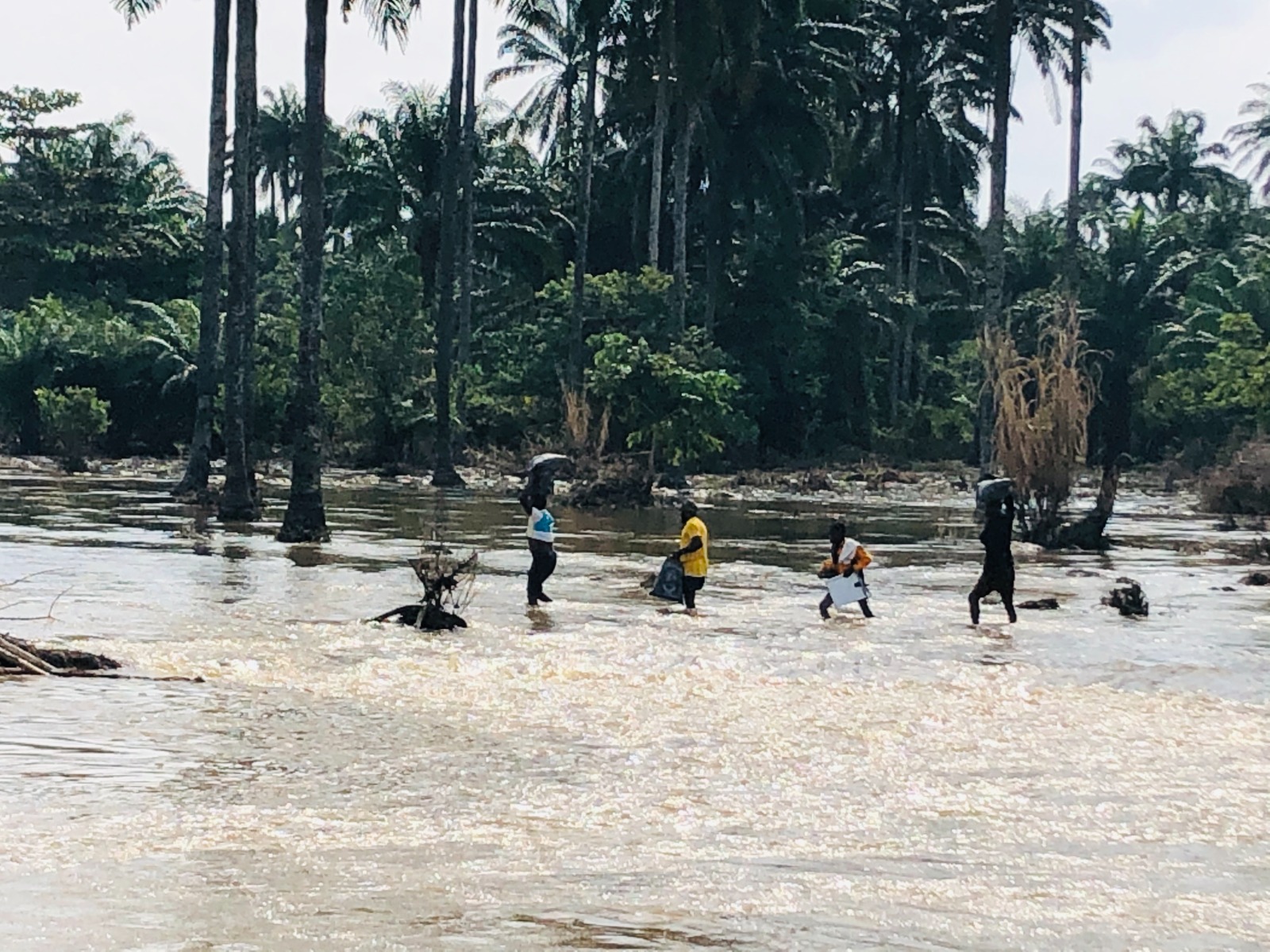
Umunankwo Community as the road to their community is flooded
Mercy recounted how she almost joined the boat on the day the incident happened.
“I had already prepared to escape with my family, but when we got to the location where the boat was waiting, I discovered that there were too many people on it and decided to go back home,” she said.
No sooner had she left the location than she got a call that the boat had capsized, killing scores of people on board. 60-year-old Benard Achonu, a resident of one of the communities in Ogbaru lost his wife and all three of his children, aged between two and six.
“I was devastated and did not know what to do, “said Mercy who took in over 15 households to live in her upstairs apartment as the flood raged. Sometimes, they contributed money to buy foodstuffs.
Mercy also recalled how she and other households ate without oil because the community markets were washed away by the flood and it usually took 30 minutes on a normal boat and 15 minutes on a speed boat to get to the nearest market which opens every four days.
“We were paying between N500 and 1000 to get there, people were sleeping, cooking and also selling inside the boat, “Some households lost both the seedlings they stored in their houses, hoping to replant and those they are yet to harvest were destroyed, “she said.
Mercy said that she harvested her Cassava, albeit prematurely before the flood came and prepared it for any eventualities.
Advisory shows hopelessness in tackling root cause
Both the Nigeria Hydrological Services Agency (NIHSA) and the Nigerian Meteorological Agency (NIMET) have that predicted 32 states, including Anambra will experience severe flooding again in 2023.
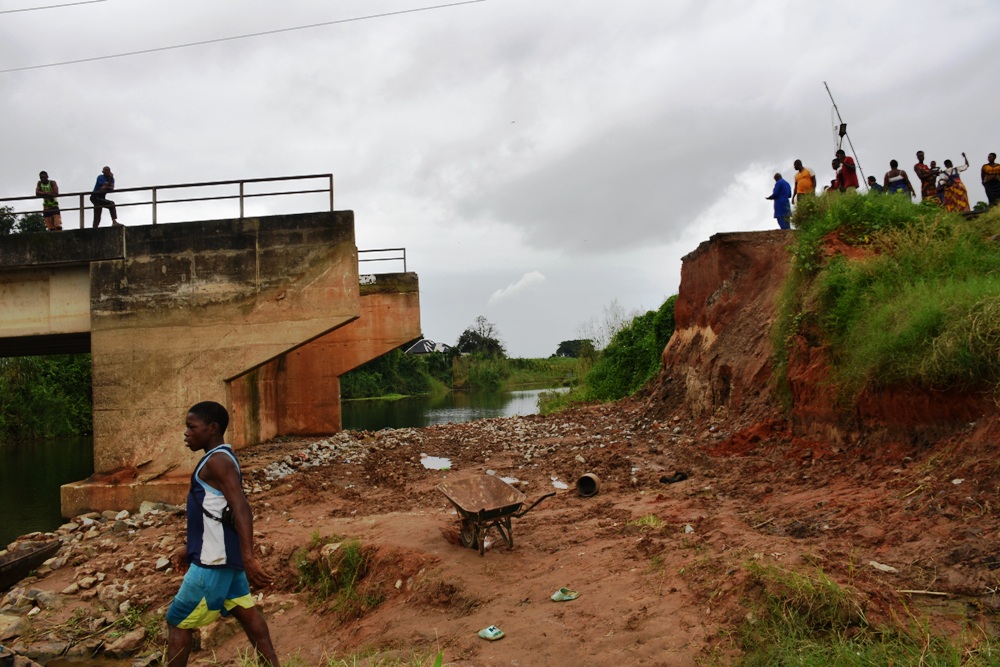
Bridge impacted by flood in Anambra
Back home, the Anambra State government, in what it described as flood mitigation measures, asked residents to plan ahead to get their families as well as the aged, the sick, pregnant women, infants and children evacuated well on time to safety nets (IDP camps provided by the state government ) to avoid preventable loss of lives as “timely evacuation is key”.
In an advisory-which the state Commissioner for Information, Paul Nwosu said was from the State Emergency Management Agency (SEMA), residents were also asked to make concrete plans to secure their household properties and essential belongings as much as possible before the flood actually set in.
Also, they were also asked to make concrete plans for timely harvesting and evacuation of their farm produce and livestock to avoid losses. Nwosu listed high-risk areas to include, Ogbaru, Ayamelum, Anambra East, Anambra West, Onitsha North, Onitsha South, Awka North, Idemili South, Ekwusigo and Ihiala LGA.
But findings by this reporter showed that the living conditions across most of the camps for displaced persons where the government wants flood victims to relocate to in the event of flooding are poor. After the 2022 flooding, most households who escaped to these camps were sleeping on the floor and on mattresses with wrappers. They were overcrowded and It was also alleged that the government failed to provide foams in some locations as promised.
Some camps in the state include; Crowder Camp in Onitsha, Unity Hall Umueri, Umuorba Primary School, Father Joe, Umundeze Primary School Ibite Ogwari Central School and Ugbuenne Central School.
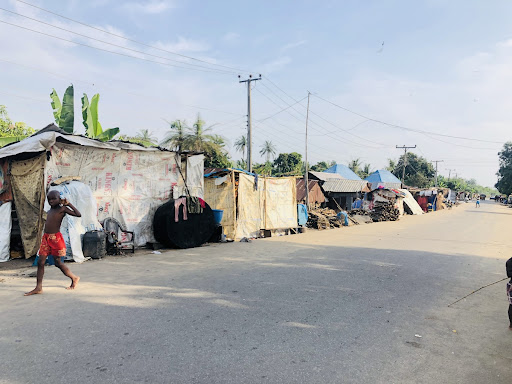
Displaced residents of Ogbaru living along the road following their collapsed buildings.
Gboyega Olorunfemi, Principal Consultant, EnviromaxGlobal Resources Limited, Ibadan said that the statement government should focus on flood enlightenment and advocacy, letting people know about disaster kits and providing early warning signal tools/apparatus.
He however said that more focus should be on finding a lasting solution to the perennial challenge of flooding across communities in the state, rather than asking residents to plan to escape to IDP camps.
Daniel Nwabueze, a community leader in Atani, said that it was worrying that despite being a major food-producing area, Ogbaru had suffered years of neglect and abandonment by both the state and federal governments.
He urged the federal government to quickly dredge the River Niger which remains the only way out of incessant flooding in the state while also calling on the Anambra State government to supply yam seedlings and other farming implements to farmers in the area to boost agricultural production.
Meanwhile, back in Ossomala, Nweke is still struggling to get back on his feet again, after the devastating flood.
